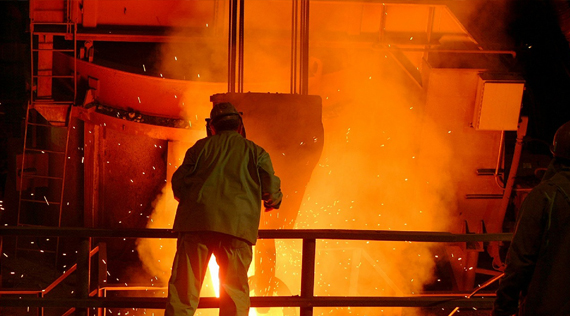
LONDON(Reuters) - Lithium is the metal that will power the coming electric vehicle (EV) revolution.
The build-out of a lithium-ion battery chain, however, is at risk from depressed pricing and a lack of investment in new capacity.
“Money needs to start flowing into the lithium market quickly, or the road to electrification will be stunted by lithium supply, in even the most conservative of forecasts.”
That warning from specialist consultancy Benchmark Minerals Intelligence (BMI) was written in July last year. (“Lithium’s Price Paradox”)
Since then prices have slid further and COVID-19 has massively disrupted both battery manufacturing and end-use demand in a collapsing automotive sector.
Established lithium producers have cut output and deferred expansions. The junior players who joined the lithium rush of three years ago have left in search of other mineral bounty.
The renewed paradox is that with politicians focusing auto sector rescue packages on EVs, particularly in Europe, lithium supply should be gearing up not gearing down.
Its inability to do so is because the metal of the future still has no price visibility.
Low prices have seen financing dry up for the lithium production sector.
Banks are more likely to commit to a new metals project if they have an idea of what the price might be when production starts - often a time lag of several years - and even more so if they can use a futures market to hedge some of the price risk they’re taking.
Lithium doesn’t offer such financing comfort. The London Metal Exchange (LME) has a potential contract in the works but it’s still months away and initial producer reaction has been cautious.
The market’s current pricing remains opaque and fractured. Fastmarkets, the LME’s pricing partner, assesses 27 prices in the lithium production chain from hard-rock spodumene to high-purity lithium hydroxide.
Lithium producers contend that even that level of coverage doesn’t capture the diversity of what is a bespoke product tailored for individual battery-maker specifications.
How, the argument follows, can you “commoditise” what isn’t a commodity?
This focus on semantics risks obscuring why any industrial sector needs future price visibility in the first place.
“It comes down to price behaviour,” according to Martin Abbott, former head of the LME and current head of globalCOAL, an online coal trading platform.
“If the nature of the market is such that the price is going to move around, then actually it’s the price behaviour that drives the need” for a futures price curve, Abbott told BMI’s recent “EV-Fest” forum.
Judged by this metric, lithium looks in desperate need of some futures transparency.
The price boom of 2016-2017 has been followed by a price bust as too much new production came onstream too soon.
The industry was still working through the glut when the coronavirus caused a demand shock, compounding the sense of oversupply.
Yet a new demand surge is already looming in the form of the multiple “green stimulus” packages as governments try and kick-start locked-down economies.
You don’t have to be a market genius to see that another price boom is coming sooner or later as an under-powered supply chain has to catch up with the next demand surge.
Lithium may not be a “commodity” in the dictionary sense but it’s definitely behaving like one price-wise.
Lithium’s challenge, according to Abbott, is to find a standard or set of standards that is applicable to a product that is not chemically standard.
This is how markets such as copper work.
Each of the world’s copper mines produces a chemically unique concentrate product because no two copper deposits are exactly alike. But everyone agrees that the copper itself is the core tradeable price component, a common standard that provides a pathway to the copper futures market, where price risk can be hedged.
The globalCOAL platform provides a similar service for the coal market, where grades and specifications vary widely.
The success of any attempt to construct a lithium forward price curve will need producers and consumers to agree a comparable set of common standards applicable to the diversity of lithium product.
The LME is publishing Fastmarkets’ lithium index pricing on its website to help nudge physical market players towards standardisation.
But there is a strong sense the industry has only started the conversation on what might form the basis of either forwards or futures pricing.
Yet the lithium industry still needs to do something, if it is to successfully evolve from the niche market of a decade ago to the metal that will power a global electric transport sector.
Compare and contrast with that other EV battery metal, nickel.
The LME three-month nickel price has also been hit hard by COVID-19, slumping to a March low of $10,865 from $18,850 per tonne in September last year.
But lower prices have prompted buying of long-dated nickel futures. Analysts at Citi note a surge in open interest beyond the front 12 months of the curve, suggesting hedging of future physical purchases by battery makers and automotive companies.
Such long-dated futures market purchases are themselves a powerful price support in a weak market.
Lithium producers would probably take any price help they can get right now. Lithium consumers would love the opportunity to lock in protection against the next price boom.
Successful new “commodity” contracts “are driven first off by the fact they are needed – and that’s generally around price discovery”, according to globalCOAL’s Abbott.
The need for lithium forward pricing is becoming more urgent.
The electric vehicle revolution may have hit pause. But the accumulating national “green stimulus” programmes are going to jump-start it.
The lithium industry needs some way of gauging the future price horizon if it’s going to meet that demand challenge.